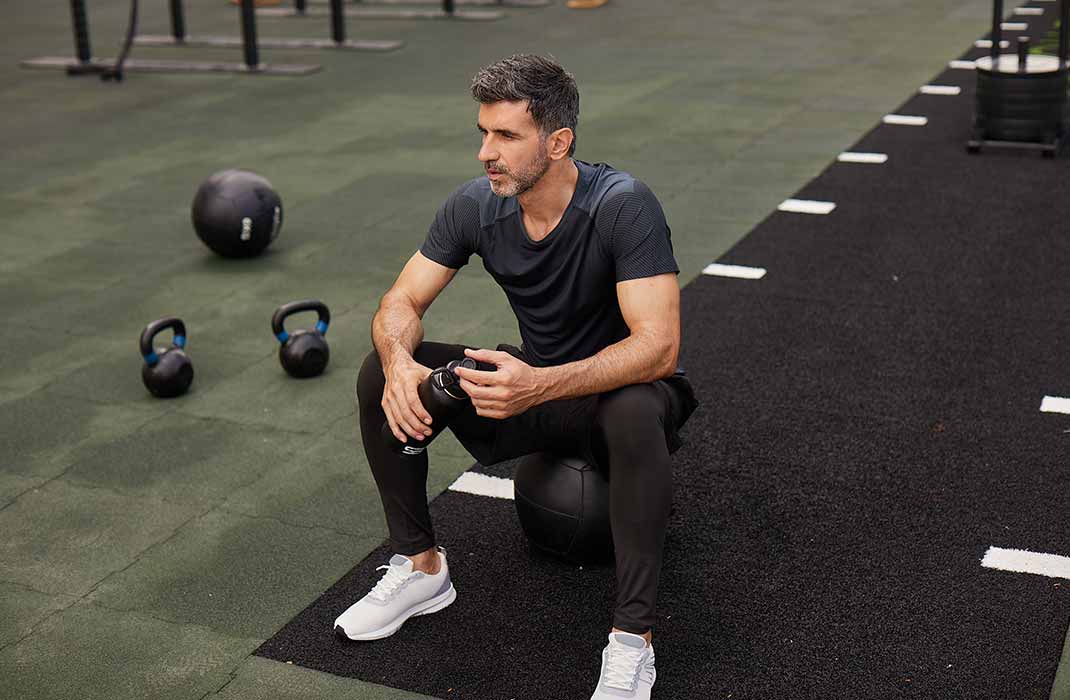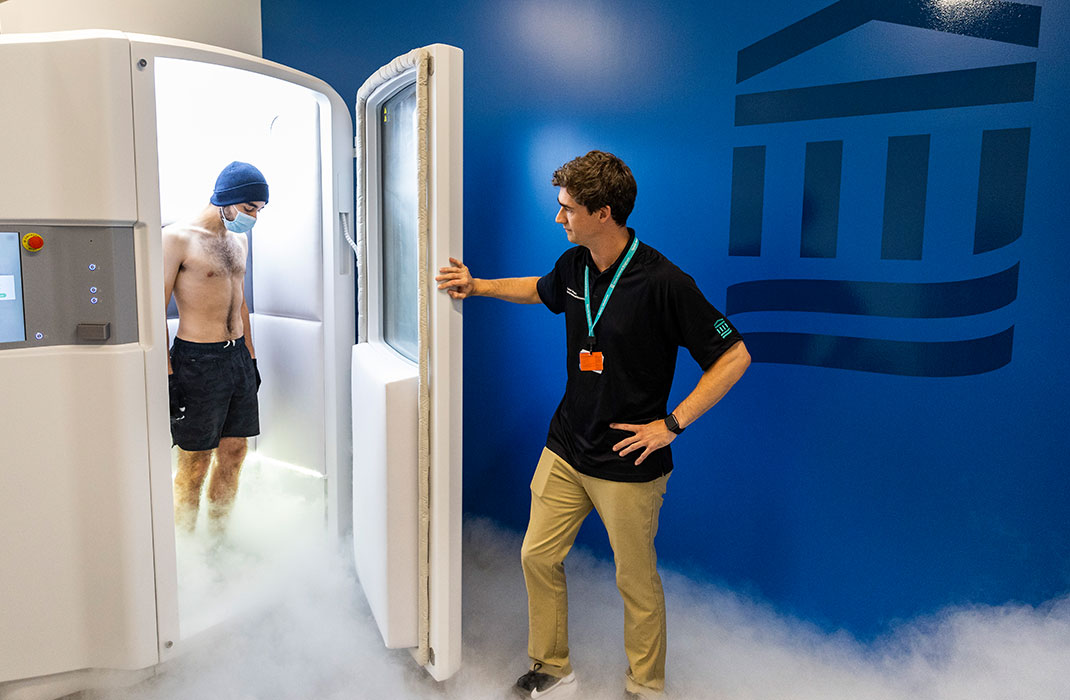For float, clients can wear a swimsuit if they prefer, but the preferred mode of entry in the tank is without clothing as clothing may add weight against the skin and the salt may break down garments over time. Clients wishing to cover their hair and scalp should bring their own swim cap. The float capsule is completely private, and the room is equipped with a shower as pre- and post-treatment showering is required.
For cryotherapy, clients typically wear a compression short and sports bra if appropriate. We provide hats, gloves, socks, warm boots, and masks that are worn during the treatment. Because of the extreme temperatures involved, there cannot be any moisture on the client’s skin inside the cryogenic chamber to lessen the risk of frost bite. For this reason, cryotherapy should be scheduled on an off day or before a workout to avoid perspiration.
For PBM, athletes lie in the bed without clothing to allow the light to bombard their skin. The bed is in a private room and is sanitized between each use.
The Center for Sports Performance and Research has ample, clean changing and showering facilities for athletes to utilize before and after all recovery and training sessions. The facilities are equipped with lockers for securing personal belongings and valuables.





